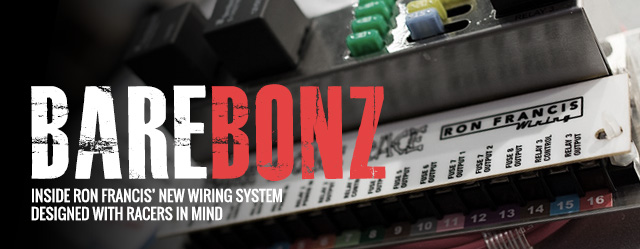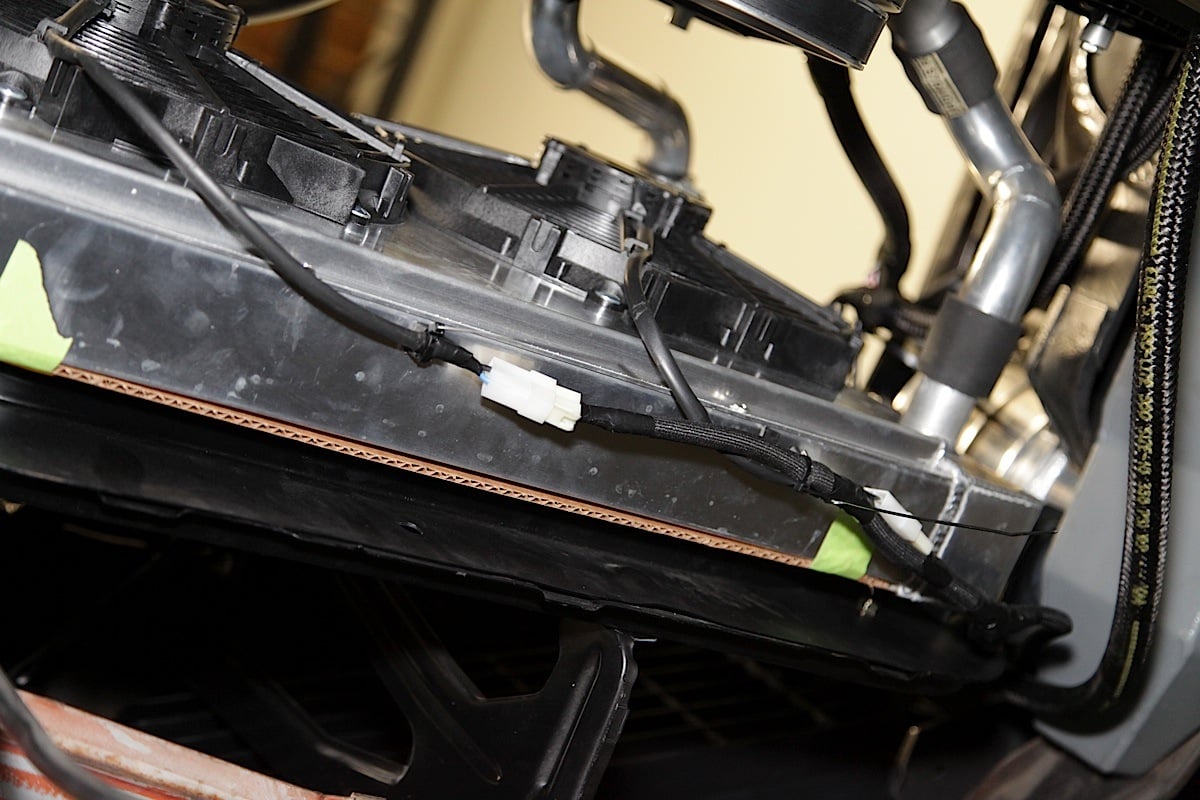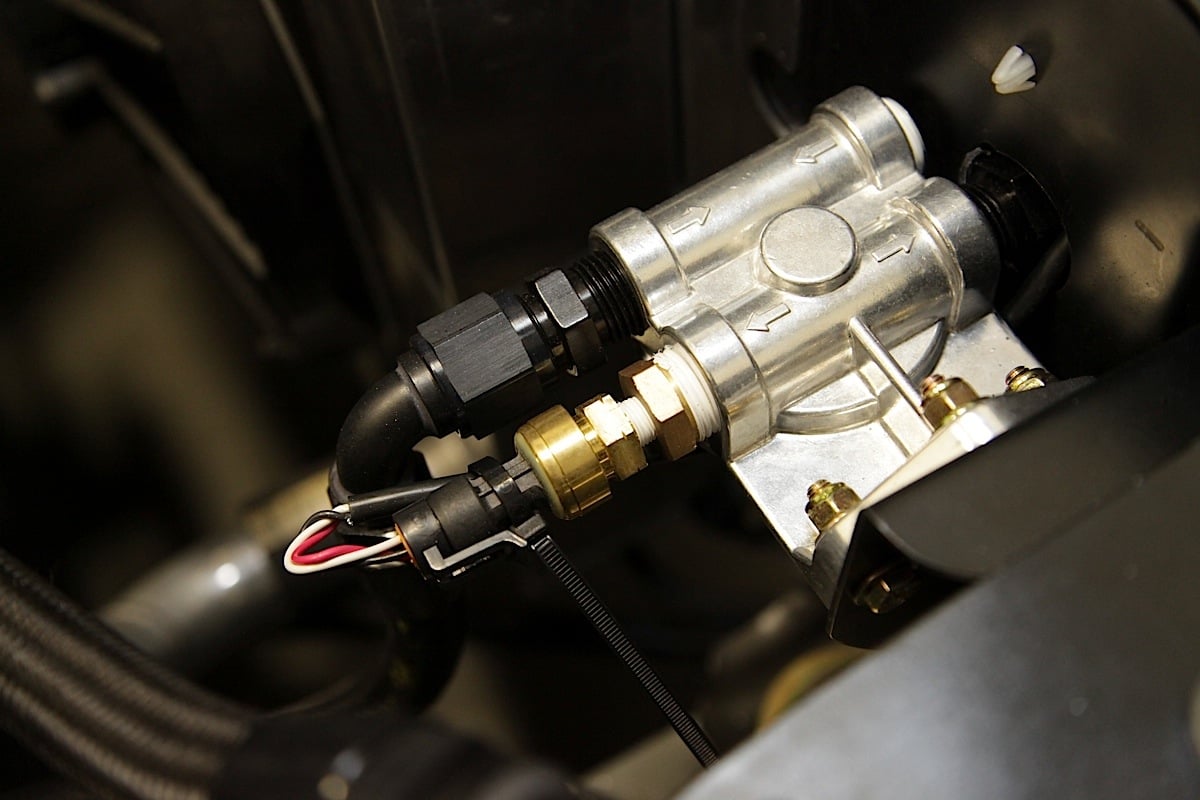There’s just no two ways about it — wiring a race car (or any car for that matter) can be a tedious, challenging, headache-inducing job. It’s the step involved in the build-up of a racing machine that few wish to undertake, and that even fewer have been able to master. Those that have, however…well, that’s why they earn the big bucks.
For the last four decades, the team at Ron Francis Wiring has been doing their part to take some of the headache out of delivering power to intricate electronic systems and components, producing a wide-ranging offering of wiring, harnesses, switches, and other accessories to do virtually anything one could deem necessary. From street cars to race cars — if it needs to be wired, they can make it happen.
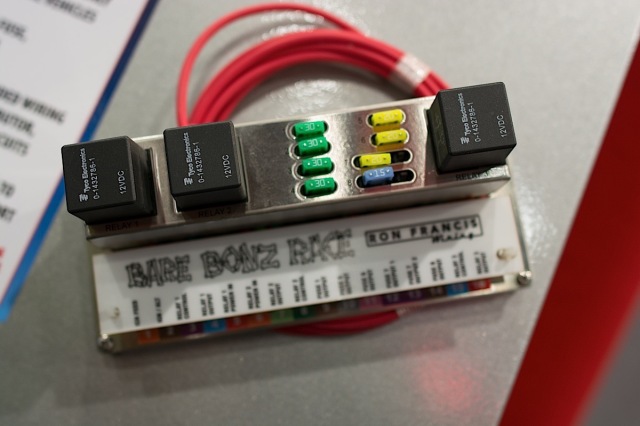
The Bare Bonz is an all-new wiring system, built upon Ron Francis’ many years of innovation, that brings about a set of features catered to racers and those with similar applications.
Thanks to their wide-ranging catalog, drag racers have been utilizing Ron Francis components for years to simplify the wiring systems in their race cars, but never before has there been an entire wiring system offered that caters specifically to the needs of drag racers or racing applications with similar needs, right out of the box. Until now.
At the recent SEMA Show in Las Vegas, Ron Francis Wiring revealed their all-new Bare Bonz Race wiring system, which they’ve engineered and spec’ed out strictly for use on non-street legal, race-only vehicles. This system, while carrying many of the odds and ends found on many of Ron Francis’ existing systems, does away with the elements and additional wiring that are unnecessary on a race car. We’ll discuss this and more with the help of Ron Francis’ own Scott Bowers as we take a closer look at the new Bare Bonz system.
The Bare Bonz

The Bare Bonz does away with many of the features of more road-going wiring panels, namely removing the connections for all of the lights that a street car would need, to create a more streamlined system for race cars.
As its basis, the Bare Bonz Race kit includes a wiring panel that serves as the nucleus of the entire system, along with color-coded and printed wires to keep the process as simple as it can be. The wiring panel features three relays and eight fused circuits in all, which provides plenty of connections for high-draw components and those that require less electric pull.
“The development process on this has been relatively simple,” Bowers begins. “As we’ve been targeting the race market more and more and conversing with potential customers, it came to light that we really do need a wiring system that attends to those with non-street legal vehicles. So for us, the natural progression was to take an existing and proven product and eliminate the circuits that aren’t needed by a race-only vehicle, and build upon our existing products in that fashion.”
As Bowers went on to explain, the elimination process was largely focused on lights and the more traditional style of ignition switch. A drag racing vehicle, for instance, will often have only a single safety tail light on the back of the car and lacks proper headlights, taillights, foglights, turn signals, four-way flashers, and even interior lights. These circuits aren’t needed. The flashers were also removed from the panel, providing additional area on the panel to install more relays. As Bowers continues: “we’ve configured the panel for mostly fused and relay circuits, and from there we built wiring ‘sub-kits’ for wiring devices that aren’t necessarily typical of a more street legal vehicle.”
As we’ve been targeting the race market more and more and conversing with potential customers, it came to light that we really do need a wiring system that attends to those with non-street legal vehicles. – Scott Bowers
“This kit is more intended for someone who’s just going to have a couple of simple toggle switches for the ignition and starter, and any other components that they may be switching for a race-type vehicle.”
The Bare Bonz panels draws its power direct from the battery or batteries. A main battery feed comes out of the panel that’s intended to run to the battery, and feeds the load side of all three of the relays as well as any of the battery feeds on the panel.
A rear bumper kill switch, which would typically be run off the battery cable (between the battery and starter solenoid or battery terminus), can be adapted to the system, but because battery cables aren’t part of the kit, provisions are not made for this right out of the box.
Bowers and the Ron Francis team worked direct with racers to develop the kit, and parts replace-ability, durability, and plenty of fused circuits were all key requests from potential customers.
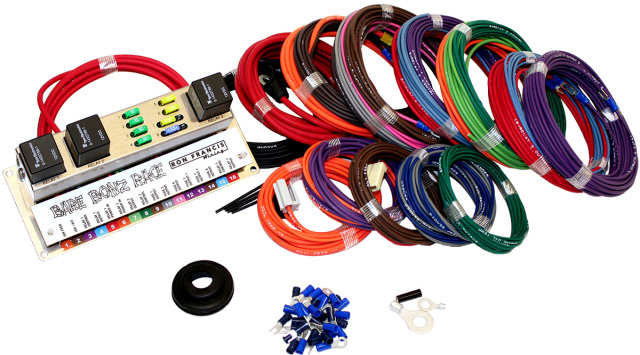
The Bare Bonz is supplied with a range of amperage-specific wiring that’s marked every five inches with the specific circuit it correlates with to help the installer keep everything organized during the process.
How It Makes Wiring Simpler
As is traditional with all of Ron Francis’ complete wiring kits, all of the wiring is color-coded to match the panel, and that feature alone adds greatly to the simplicity of wiring a complete vehicle. As well, all of the wiring features printed markings every five inches with the circuit they’re matched to.
“Those aspects alone, with complete instructions, makes for a very easy kit for a racer to install,” says Bowers.
The included wiring has been left relatively open-ended, as Bowers explains, with eight or nine circuits that the wiring has been labeled to match. The installer can then decide what items are going to go with which circuits. Both the length and gauge of a wire determine the kind of amperage it can carry, and Ron Francis has sized the included wiring as such for each circuit, ranging from 18 to 10 gauge, appropriately.
With three relays and eight fused circuits, the Bare Bonz is perfect for operating race-specific systems like high-draw fuel pumps and water pumps, cooling fans, or even small taillights and delay boxes on the lower-draw fused circuits.
On the panel, there’s also a coverstrip at the terminal ports with markings to identify which fuse or relay that the terminals are associated with. This coverstrip includes information on whether the terminal is a relay output, a trigger, or a non-relayed fused circuit.
Fuses And Relays
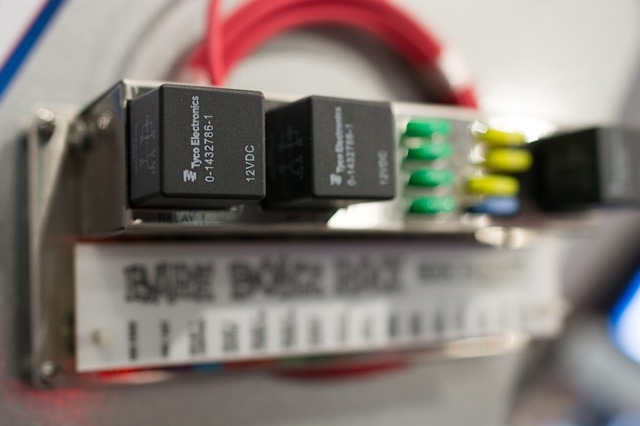
The three 30 amp relay circuits will more than adequately power those high-draw items in your race car.
The Bare Bonz system can control largely any common item that would be found in a more traditional drag racing vehicle, including cockpit switch panels and NHRA and IHRA-required kill switches at the rear of the car. Enough wiring is supplied to handle each of these components, be it fuel pumps, electric fans, the ignition system, or some other item.
“All of the wiring is there, it’s just a matter of deciding switch No. 1 is going to be wired through fuse No. 1 and is going to control the fuel pump, or whichever item you so choose,” says Bowers.
As alluded to previously, the Bare Bonz features eight fused circuits, in all, with three of those (circuits 1-3) operating as relays. These allow for high-draw items in the car, like your fuel pump, water pump and electric fans, to operate through a switch operated by a relay. These circuits are in essence utilized to run high-draw components using a low-power signal.
This kit is more intended for someone who’s just going to have a couple of simple toggle switches for the ignition and starter, and any other components that they may be switching for a race-type vehicle. – Scott Bowers
The remaining five fused circuits are then driven by a power signal direct from the battery for devices that run on solid-state, low-amperage circuitry, such as a data logger, a delay box, the ignition system, or similar.
Drop Down Bracket
The Bare Bonz system can be had with an optional drop down bracket (Part No. HP-36) that allows for better access to the fuse panel. With this bracket, the panel can be “unhooked” and dropped down. Such a design is quite useful in race cars, where the panel is often mounted below the dash or other tight quarters.
As Bowers points out, it depends entirely on the amperage of the item, and not what the item is or does. “A fuel pump, for example, can draw anywhere from 8 to 30 amps, depending on what size it is. The same goes for an electric fan.”
The new Bare Bonz system offers a number of great features for the weekend warrior racer, and will serve more than adequately for the needs of the average racer. Bowers, who performs a number of seminars on electronics and wiring each year, always promotes planning ahead and thinking about all of the equipment and number of fused circuits one might need prior to going into a wiring kit.
For a racer with a lot of electronics, he says they might look to a system with a larger fuse panel. He did indicate, however, that Ron Francis is planning to broaden their product line in the future with bigger wiring panels that include additional relays and fuses, just to cover that very type of need. But what they have in the Bare Bonz is a very capable product that’s certain to make life easier for drag racers everywhere.



